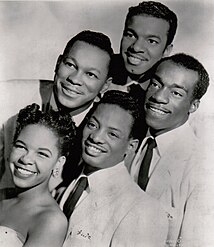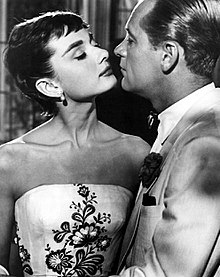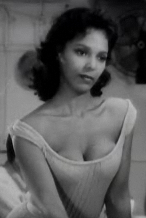
"Shulchan Arukh, Even HaEzer 115:4". www.sefaria.org. Retrieved 28 November 2023.
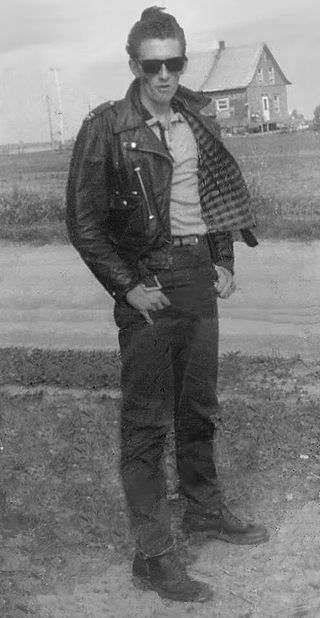
Greasers are a youth subculture that emerged in the 1950s and early 1960s from predominantly working class and lower-class teenagers and young adults in the United States and Canada. The subculture remained prominent into the mid-1960s and was particularly embraced by certain ethnic groups in urban areas, particularly Italian Americans and Hispanic Americans.

A crew cut is a type of haircut in which the upright hair on the top of the head is cut relatively short, graduated in length from the longest hair that forms a short pomp (pompadour) at the front hairline to the shortest at the back of the crown so that in side profile, so the outline of the top hair approaches the horizontal. Relative to the front view, and to varying degrees, the outline of the top hair can be arched or flattened at the short pomp front and rounded or flattened over the rest of the top to complement the front hairline, head shape, face shape and facial features. The hair on the sides and back of the head is usually tapered short, semi-short, or medium.
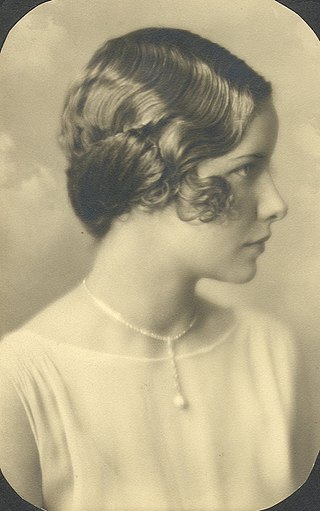
A finger wave is a method of setting hair into waves (curls) that was popular in the 1920s and early 1930s and again in the late 1990s in North America and Europe. Silver screen actresses such as Josephine Baker and Esther Phillips are credited with the original popularity of finger waves. In their return in the 1990s, the style was popularized by pop stars like Madonna, and hip-hop stars of the time, such as Missy Elliott. The popularity of finger waves in the 1990s was aided by a movement toward shorter, more natural hair in the African-American community. This also was a common hairstyle worn by slaves back in 1802 through generations to 1889 and only began to take effect of popularity when Bette Davis danced on Sugar be mine live television.
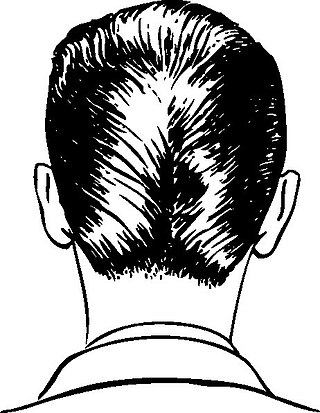
The ducktail is a men's haircut style popular during the 1950s. It is also called the duck's tail, duck's ass, duck's arse, or simply D.A. and is also described as slicked back hair. The hair is pomaded (greased), combed back around the sides, and parted centrally down the back of the head.

Pomade is a greasy, waxy, or water-based substance that is used to style hair. It generally gives the user's hair a shiny, slick appearance. It lasts longer than most hair-care products, and often requires multiple washes for complete removal. The pomades of the 18th and 19th centuries consisted mainly of bear fat or lard. Lanolin, beeswax and petroleum jelly have been used extensively in modern pomades. The hold of pomades makes sculptured hairstyles such as the pompadour waves (hairstyle) possible.

Let's trim our hair in accordance with the socialist lifestyle was a television program broadcast on state-run Korean Central Television in North Korea between 2004 and 2005 as part of a longstanding government propaganda against haircuts and fashions deemed at odds with "Socialist values". The program claimed that long hair could adversely affect human intelligence.

The Teddy Boys or Teds were a mainly British youth subculture of the early 1950s to mid-1960s who were interested in rock and roll and R&B music, wearing clothes partly inspired by the styles worn by dandies in the Edwardian period, which Savile Row tailors had attempted to re-introduce in Britain after the Second World War.

The beehive is a hairstyle in which long hair is piled up in a conical shape on the top of the head and slightly backwards pointing, giving some resemblance to the shape of a traditional beehive. It is also known as the B-52 due to a resemblance to the distinctive nose of the Boeing B-52 Strategic Bomber. The 1980s band The B-52's, took their name from the hairstyle which was worn by members Cindy Wilson and Kate Pierson.
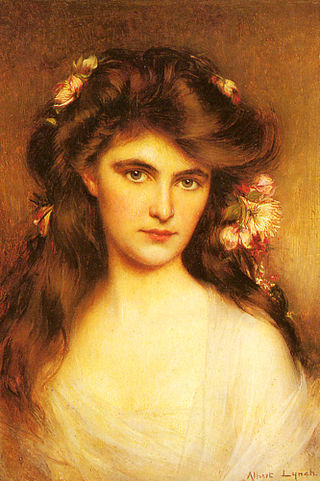
A bouffant is a type of puffy, rounded hairstyle characterized by hair raised high on the head and usually covering the ears or hanging down on the sides.

Fashion of the 1960s featured a number of diverse trends, as part of a decade that broke many fashion traditions, adopted new cultures, and launched a new age of social movements. Around the middle of the decade, fashions arising from small pockets of young people in a few urban centers received large amounts of media publicity, and began to heavily influence both the haute couture of elite designers and the mass-market manufacturers. Examples include the mini skirt, culottes, go-go boots, and more experimental fashions, less often seen on the street, such as curved PVC dresses and other PVC clothes.
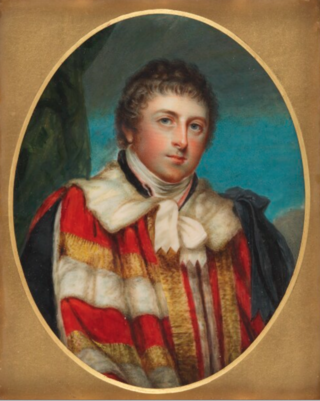
An eponymous hairstyle is a particular hairstyle that has become fashionable during a certain period of time through its association with a prominent individual.

Fashion in the years following World War II is characterized by the resurgence of haute couture after the austerity of the war years. Square shoulders and short skirts were replaced by the soft femininity of Christian Dior's "New Look" silhouette, with its sweeping longer skirts, fitted waist, and rounded shoulders, which in turn gave way to an unfitted, structural look in the later 1950s.
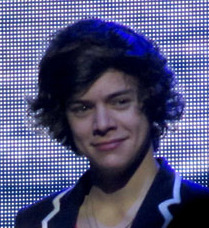
The wings haircut, also known the Mod haircut, Mop top, flippies, flow, Justin Bieber haircut, or skater hair is a popular hairstyle used in the skateboarding, surfer, mod, and preppy community. Typically long, the style can range from long and drooping below the eyes, to a shorter length. The haircut is typically wavy and, if straight, the length comes to halfway down the ears. Instead of lying on the wearer's ears, the hair flips up and comes straight out like an airplane wing, hence the name. The hairstyle was popular among men in the 1960s, 1970s, mid-late 2000s, early 2010s and 2020s.

Bangs, or a fringe, are strands or locks of hair that fall over the scalp's front hairline to cover the forehead, usually just above the eyebrows, though can range to various lengths. While most people cut their bangs straight, they may also shape them in an arc or leave them ragged.

The pompadour is a hairstyle named after Madame de Pompadour (1721–1764), a mistress of King Louis XV of France. Although there are numerous variations of the style for men, women, and children, the basic concept is having a large volume of hair swept upwards from the face and worn high over the forehead, and sometimes upswept around the sides and back as well.

Surfer hair is a tousled type of hairstyle, popularized by surfers from the 1950s onwards, traditionally long, thick and naturally bleached from high exposure to the sun and salt water of the sea. In the late 1960s and 1970s, the long hair and general lack of personal grooming was closely associated with hippie culture. Today, hairstyling companies brand their own hair gels, shampoos and hair wax to achieve the "surfer look" with hairstyles that are often shorter than traditionally, which often require more grooming to achieve the permanent hair lift or intentional windswept look. Amongst women, fashion magazines have referred to "sun streaked surfer hair" as a desirable look for women, although genuine surfer hair is often heavily damaged by the elements.
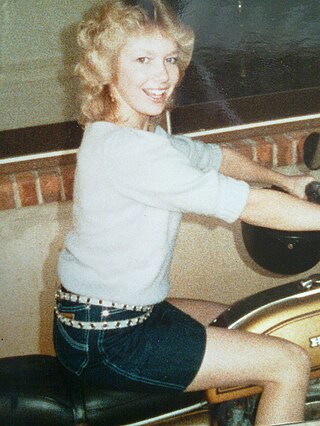
Hairstyles in the 1980s included the mullet, tall mohawk hairstyles, jheri curls, flattops, and hi-top fades, which became popular styles. Amongst women, large hair-dos, puffed-up styles, permanent waves, and softer cuts typified the decade. Big hair that was "often permed to achieve the desired volume" is especially associated with women of the mid 1980s as well as male rockstars of that era, especially of the glam metal genre. Television shows such as Dynasty helped popularize the high volume bouffant and glamorous image associated with it.
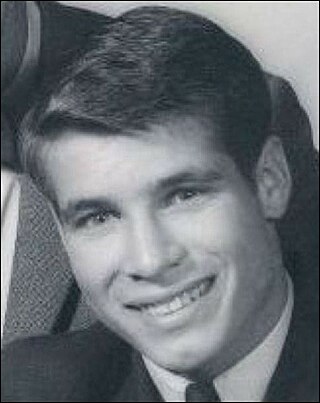
A regular haircut, in Western fashion, is a men's and boys' hairstyle that has hair long enough to comb on top, a defined or deconstructed side part, and a short, semi-short, medium, long, or extra long back and sides. The style is also known by other names including taper cut, regular taper cut, side-part and standard haircut; as well as short back and sides, business-man cut and professional cut, subject to varying national, regional, and local interpretations of the specific taper for the back and sides.

Shanghai-Style Barber Shop is a barber shop opened by a group of Shanghai barbers coming to Hong Kong mainly in the 1950s to give classical Shanghai haircuts. It is popular in Hong Kong among higher class people in the period of 1950s-1970s, offering a range of classical haircut until today. Other than hair-cutting, Shanghai style barber shops provide different unique services include trimming, massaging, nails clipping, etc. Despite the sunset of Shanghai style barber shop in Hong Kong in the modern days, it still attracts loyal customers, especially among males, and costs around HK$70 for a haircut and shave using traditional clippers.












